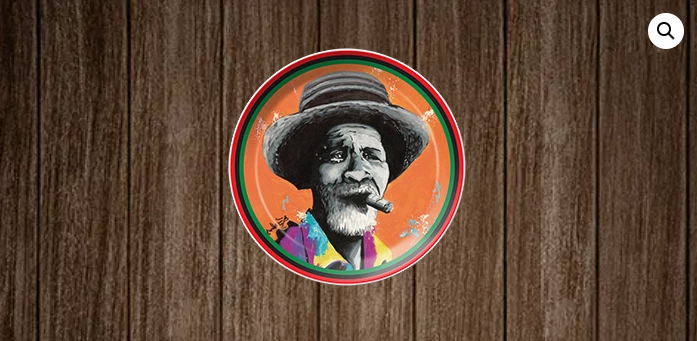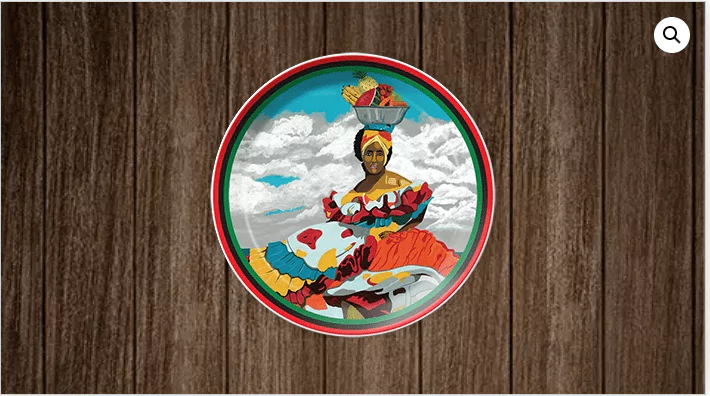Schedule Appointment
Schedule Appointment

African American culture has played an important role in world music, fashion, cuisine, and art trends. It is grounded in strength, creativity, and community. Black American culture in America continues to drive movements and inspire individuals throughout the world. Here are ten ways African American culture has impacted the world — including one-of-a-kind art pieces like the First Generation College Student plates, Social Hour at the Barber Shop plates, and The Fruit Ladies plates.
What was born in the Bronx during the 1970s is now a global movement. Hip-hop, its four main elements—MCing, DJing, breakdancing, and graffiti—has gone international. African Americans’ beat and style, adopted by artists from Seoul to São Paulo, are now listened to and replicated by musicians worldwide. From Kendrick Lamar’s songs to Public Enemy’s activism, hip-hop continues to shape political discourses, teen culture, and street style all over the globe.
The Black barbershop has never been just somewhere to have a haircut; it’s part of the culture.

This is evidenced in the Social Hour at the Barber Shop plates, which pay tribute to how these shops enable community, enjoyment, and discussion. These plates indicate how outstanding Saturday morning sessions are and how knowledge is passed down through generations. Globally, the concept of the Black barbershop has influenced salon culture in the Caribbean, the UK, and even parts of West Africa.
Soul food includes fried chicken, collard greens, and sweet potato pie. It is a warm type of food. It originated in African, Native American, and Southern cultures. Soul food is global. Soul food restaurants are found in cities such as London, Tokyo, and Johannesburg, serving foods first prepared in African American households. Soul food is not just food; it’s history, survival, and identity.
Historically Black Colleges and Universities (HBCUs) are highly significant and this has been the case for decades.

The First Generation College Student plates embody the pride, effort, and aspirations of pioneering students in African American families. These ornaments symbolize a milestone: education as freedom. Everywhere across the globe, the notion of being the “first” to break education barriers resonates with students of color and those in underrepresented communities everywhere.
African American style—zoot suits to Air Force 1s—is never on the periphery. Off-White, FUBU, and Pyer Moss are channeling the mix of self-expression, rebellion, and ingenuity of Black style. High-end fashion around the globe has taken notice, drawing on the streets of Harlem, Atlanta, and Compton. Hip-hop-infused streetwear is striking Parisian and Milanese catwalks today.

The Fruit Ladies plates show a simple kind of beauty. They honor the women—often grandmothers, mothers, and aunties—who bring love, color, and food into Black homes. These women, shown with fruit baskets and bright clothes, remind us of African traditions and Caribbean markets. This imagery is used in art, home decorations, and even branding, reaching far beyond African American homes.
Before big pop stars, there were spirituals—songs that emerged out of suffering, hope, and unshakeable faith. Born out of African American church practices, gospel music has impacted music worldwide. Musicians from outside the genre—such as Aretha Franklin and Kirk Franklin—have introduced the rich emotions of gospel to the world. Black church gospel choirs and worship patterns are now found in Sweden and South Africa.
African American Vernacular English (AAVE) is likely to be at the forefront of developing slang that becomes viral. Slang terms such as “woke,” “lit,” “shade,” and “vibe” originated in Black communities and are now being utilized in corporate marketing and mainstream conversation globally. Although cultural appropriation is a timely issue, we should not invalidate the new ideas of language from Black speech.
African American dance trends, including the Harlem Shake, the Dougie, the Renegade, and TikTok challenges, have been extremely popular many times. Choreographers and young artists have brought street dance to many, impacting dance studios and pop culture in Europe, Asia, and Latin America. These dances are not simply movements—they contain joy, power, and fashion from their culture.
Something that began as a hashtag in America soon became a global call to action. The movement that started with the struggle for justice by African Americans has ignited the same movements in the UK, Brazil, Australia, and elsewhere. From the toppling of statues to global protests in support of the cause, the movement indicates how the struggle of African Americans continues to shape global discourse on race, justice, and human rights.
African American culture doesn’t merely impact; it builds. Its heritage is rich and world-renowned through resistance, song, food, and art. Cultural manifestations such as the First Generation College Student plates, the Social Hour at the Barber Shop plates, and the Fruit Ladies plates teach us that narratives are presented in numerous ways—and that every narrative adds to a rich, vibrant history of worldwide influence. As African American culture continues to develop, its impact grows, too. And the world is a finer—and more beautiful—place for it.